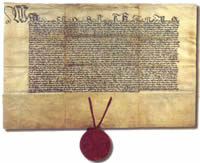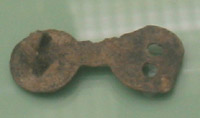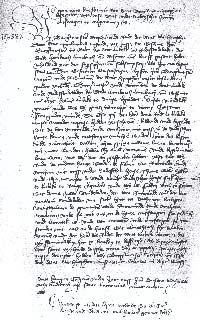The Hanse community Roermond
Charlotte Ruys - Janssen
Translation Ton JanssenThe Start:
Roermond, being an important market town on the river Maas was the first city in Limburg to join the Hanze. The Hanze was a community of travelling tradesmen, from the 13th century, which developed into a community of cities.
Function:
Originally only Baltic cities but soon joined by others to become a powerful group. They convened regularly to take important decisions in order to protect their mutual interests: the “Stapelrecht” a privilege under which non-resident merchants were forced to offer all of their wares for sale for a certain period in the city or pay a fine or tax. Originally conceived to ensure the supply of goods to the city's residents, it afforded the Roermond tradesmen the very profitable opportunity to act as middlemen.
Weaponry, salt, beer, wine, coal and cloth was transported to the East and hide, fur, wax, honey, herring and wood was brought in return.
Hay-day:
In their hey-day the Hanze counted more than 200 members! Not only did the Hanseatic towns prosper but their connections also lead to a cultural, architectural and philosophical exchange. Which manifested itself in important buildings, trading corporations and town walls. These cities attracted painters, architects, poets and philosophers who were responsible for a cultural and artistic flourishing period.
The Joining of Roermond:
It is not clear when exactly Roermond joined the Hanze. It requests membership in a document dated September 24th, 1437, but according to experts this concerns a renewal. Roermond trades with numerous Hanze towns long before 1437. In documents of the Hanze conventions Roermond is mentioned as a participant for the first time in 1441. This is taken by some as the official year of joining; however the fact remains that Roermond is doing business with other Hanseatic towns already in the early middle-ages. It was famous for its cloth and an important transfer port for many products from Dinant, Liège and Namur.
Decline:
The decline of the Hanze started with rise of the national and territorial economies which left no room for a supra-regional trading community. The last Hanze convention was held in Lübeck in 1669.
New Hanse:
Today the Hanze are alive! The towns that formed the original Hanze are reunited again and Roermond is a member. The emphasis is on cultural exchange and making citizens aware of the Hanze history of their cities. Fraternization across borders: a new kind of peace movement in Europe.



